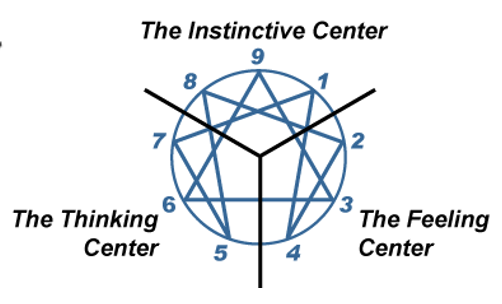What is the Enneagram?
The Enneagram is a holistic personality system focused on addressing the physical, emotional, mental and spiritual dimensions of an individual. Many refer to the Enneagram today as the Enneagram of Personality, a study of how these distinct thinking, emoting, and reacting patterns are specific personality aspects.
The Enneagram refers to the illustration of nine personality types, located on the nine points in the diagram below. The name is derived from two words joined, “ennea,” the Greek word for nine, and gram relating to a map or symbol.
There are many features to the Enneagram symbol; centers of intelligence, wings and lines of growth and stress. Each feature offers guidance towards transformative growth.
Although the Enneagram is an ancient personality system, the modern Enneagram, was developed in the twentieth century, evolving through various thought leaders’ teachings, including psychiatrists, psychologists, and spiritual leaders interested in human development. Recent research in neuroscience supports the findings of the nine types. The findings by Dr. David Daniels from a 2018 intervention study examining ego development, provide important insights into the use of the Enneagram system. The findings show the Enneagram promotes ego development in adulthood and facilitates the achievement of post conventional psychological growth(https://drdaviddaniels.com/scientific-verification-enneagram/).
As a person engages the growth mindset, their personality type will be less fixed, becoming more receptive and less reactive to life around them. Ginger Lapid-Bogda, a pioneer in bringing the Enneagram to organizations says, “Each of us has only one place, or number, on the Enneagram; while our Enneagram type remains the same throughout our lifetime, the characteristics of our type may either soften or become more pronounced as we grow and develop.”

